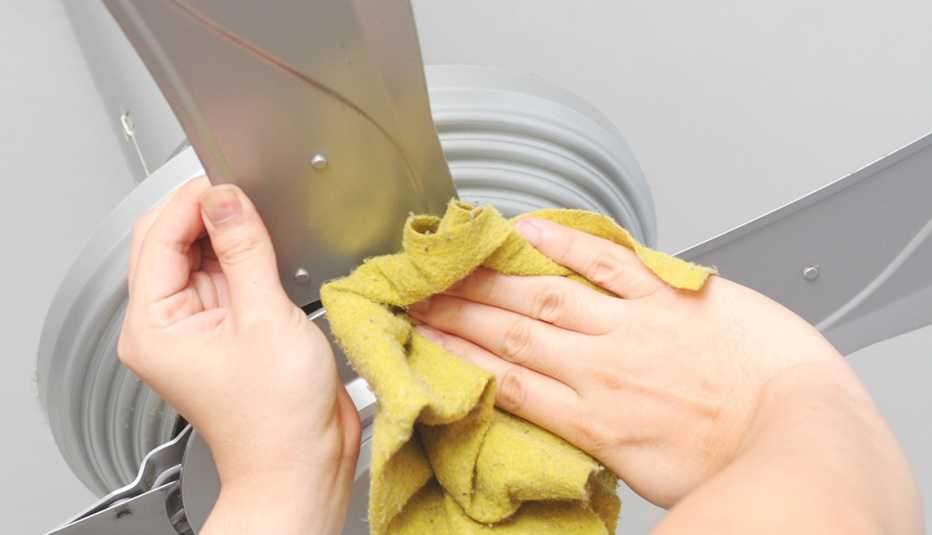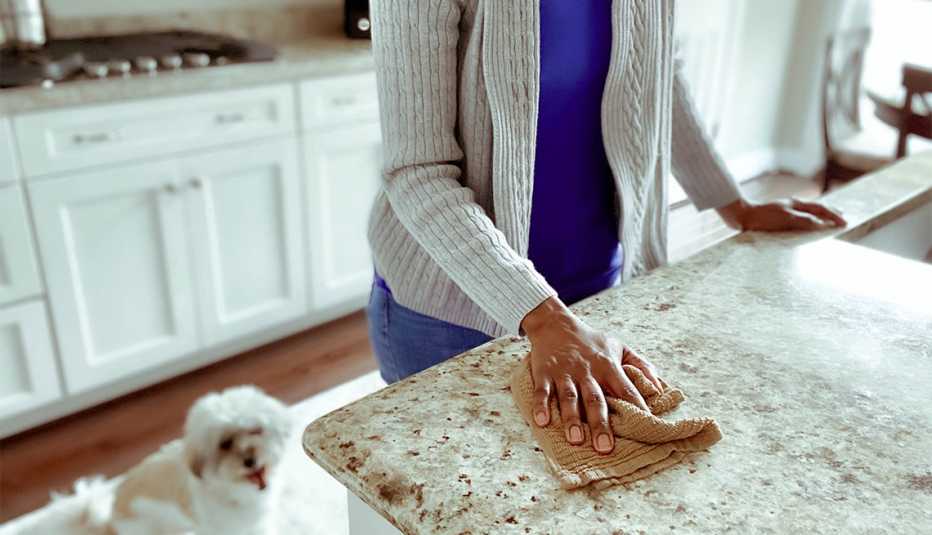Staying Fit
You can’t see them, but your home is teeming with microscopic germs that can spread illness among your family and guests.
“Even the cleanest house will have bacteria and viruses,” says Ernesto Abel-Santos, a professor of biochemistry at the University of Nevada, Las Vegas. “Most of them are actually beneficial to us.”
People need to watch out for the ones that are harmful, however.


AARP Membership— $12 for your first year when you sign up for Automatic Renewal
Get instant access to members-only products and hundreds of discounts, a free second membership, and a subscription to AARP the Magazine.
The preparation of raw food makes the kitchen a breeding ground for microbes — the scientific term for viruses and bacteria. The bathroom and laundry room also are hot spots, says Lori Delorme Banks, an assistant professor of biology at Bates College in Lewiston, Maine. Why? Germs like warm, moist environments. Water and the absence of sunlight help bacteria grow.
Touching germ-covered surfaces is the main way colds, stomach flu and foodborne illnesses spread. People with diseases that weaken the immune system, like diabetes, may be at higher risk of contracting these illnesses.
The flu virus, for example, can live up to 48 hours on hard surfaces, according to the Hygiene Council, an international group of infectious disease experts. Hardier bacteria can even last up to a week.
Although the COVID-19 virus can live for days on some surfaces, research has found that’s not typically how it is transmitted. The virus mainly spreads by air — droplets of saliva from person to person as they sneeze, cough or speak.
“Maintaining clean surfaces at home is important because it’s the first line of protecting your family,” Banks says. Soap with hot water is OK to clean many surfaces, but she recommends using an alcohol-based cleaner (70 percent of higher) or a diluted bleach solution (one part bleach to nine parts water) daily or a couple of times a week. You also can buy disinfecting wipes made with bleach.
Here are 13 of the germiest household areas and how to clean them.
1. Spice jars
Think all you’re doing is sprinkling spices on your food? You might also be transferring — or picking up — bacteria on your hands as you handle those jars of cumin, paprika or chili powder. A study published in the Journal of Food Protection last year found that as people cook, they often spread bacteria to spice jars. As part of the study, researchers asked people to prepare a meal of turkey patties and a salad. After the meal was cooked, researchers detected bacteria from the turkey on 48 percent of the spice containers, making the jars a key vehicle for cross-contamination. To prevent this, make sure you wash your hands before cooking and after handling any raw meat. And you can use a hot, soapy cloth or disinfectant wipes on spice jars for a clean slate.
2. High-touch surfaces
The germiest household surfaces are those touched daily by many people, such as faucets, light switches and remotes. You also can add phones, computer keyboards, microwave pads and game consoles to this list. Clean them with disinfectant wipes with an alcohol base that evaporates instead of a spray.






































































